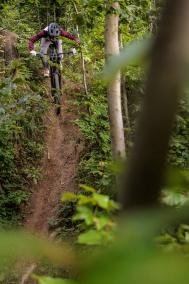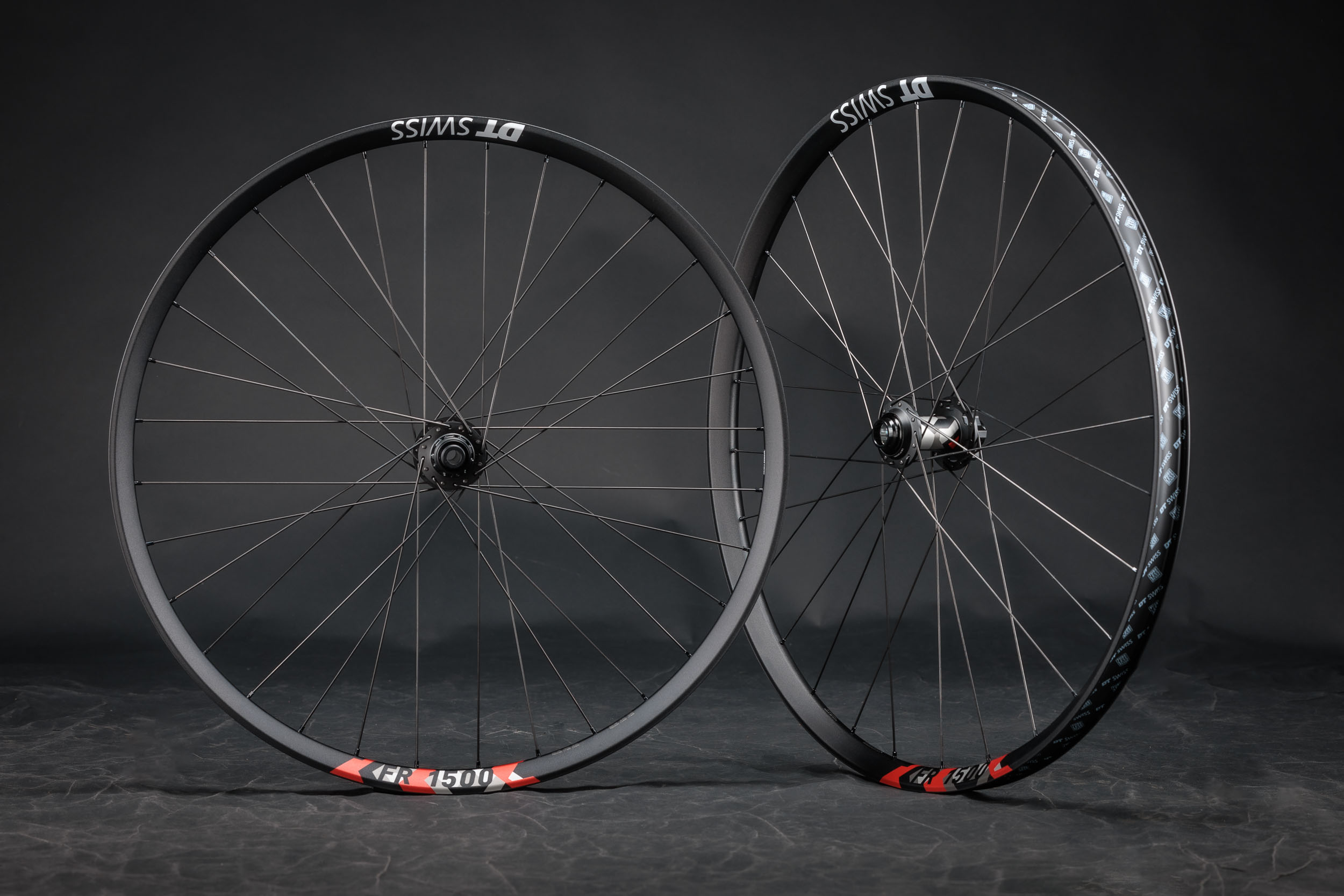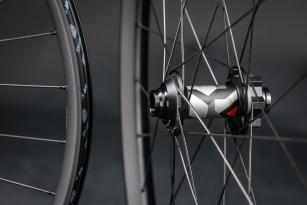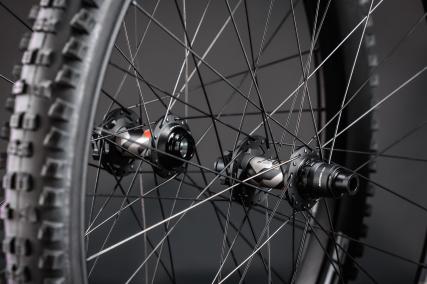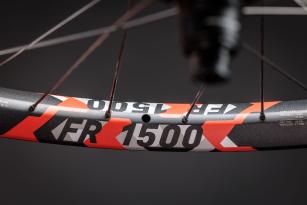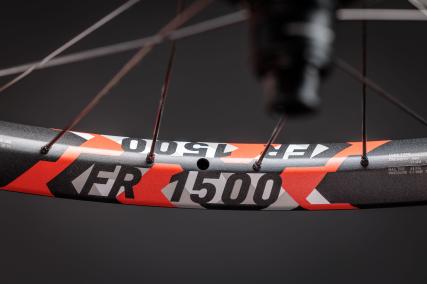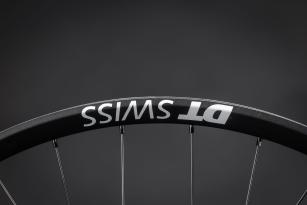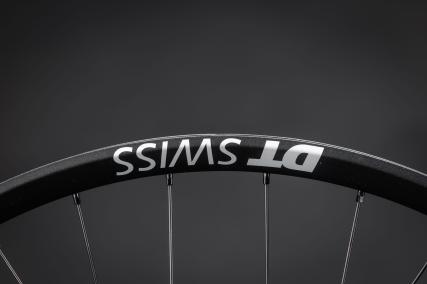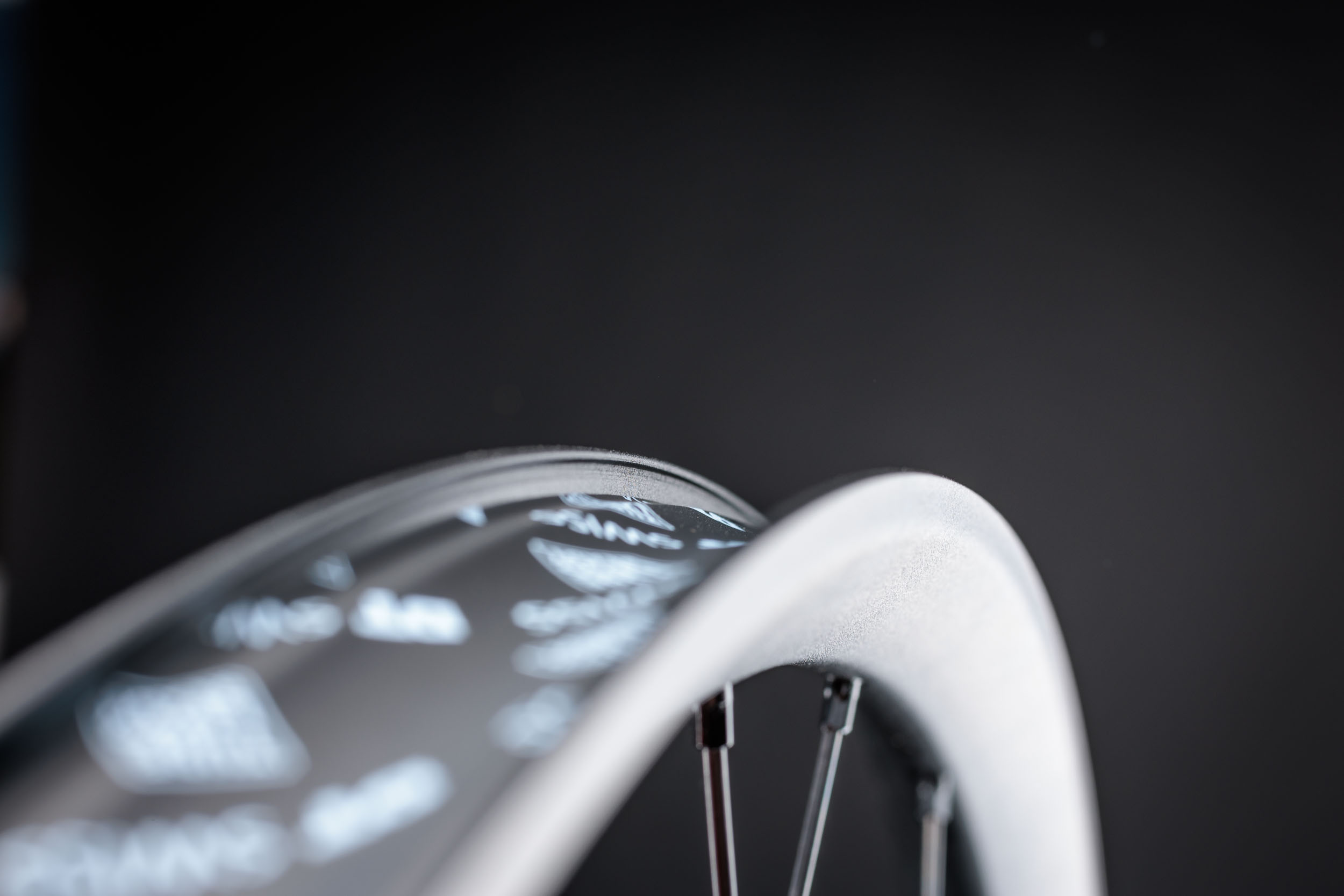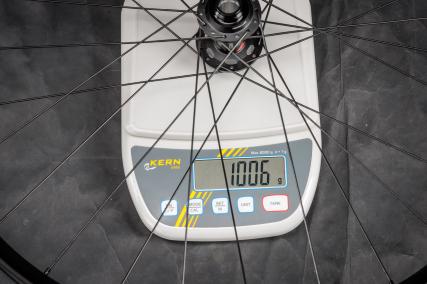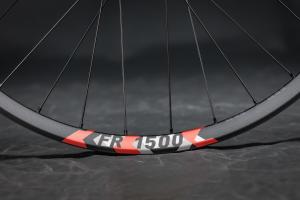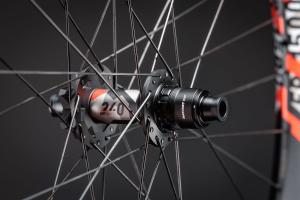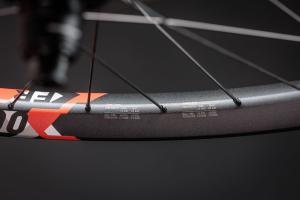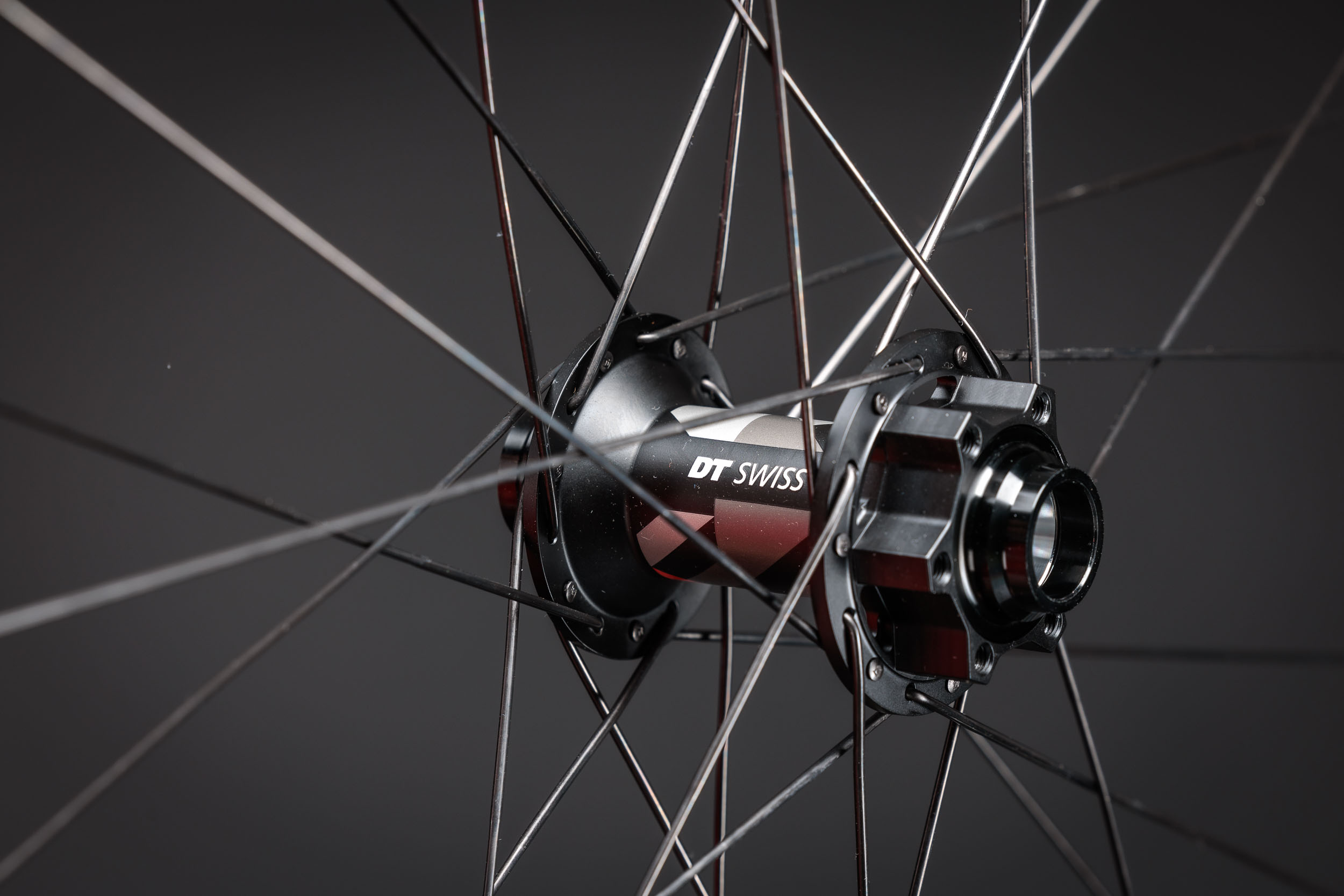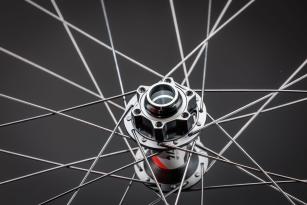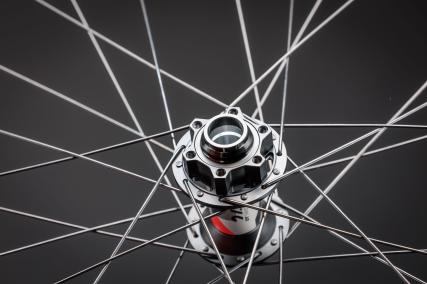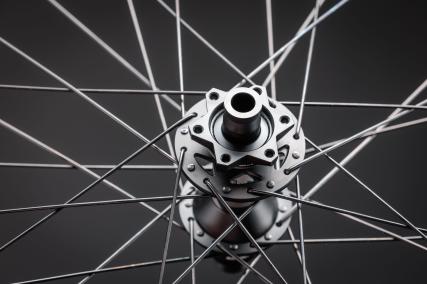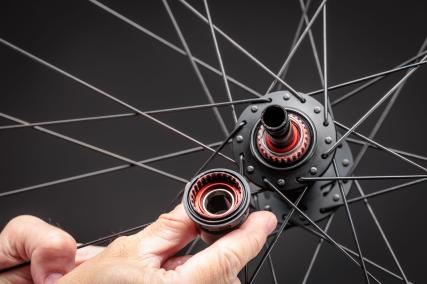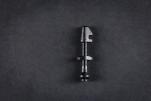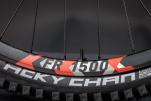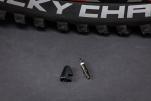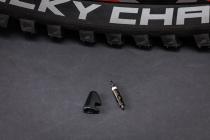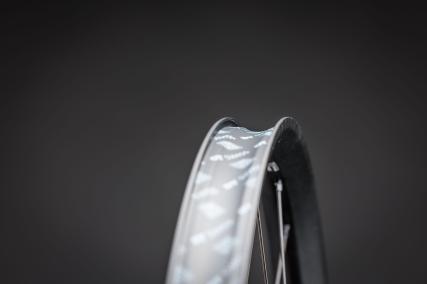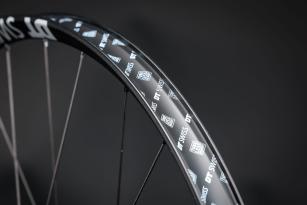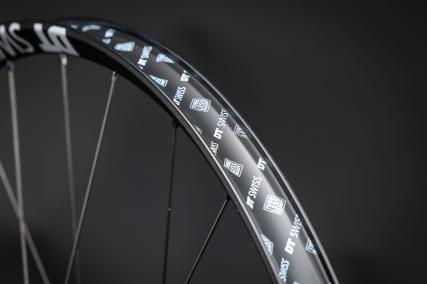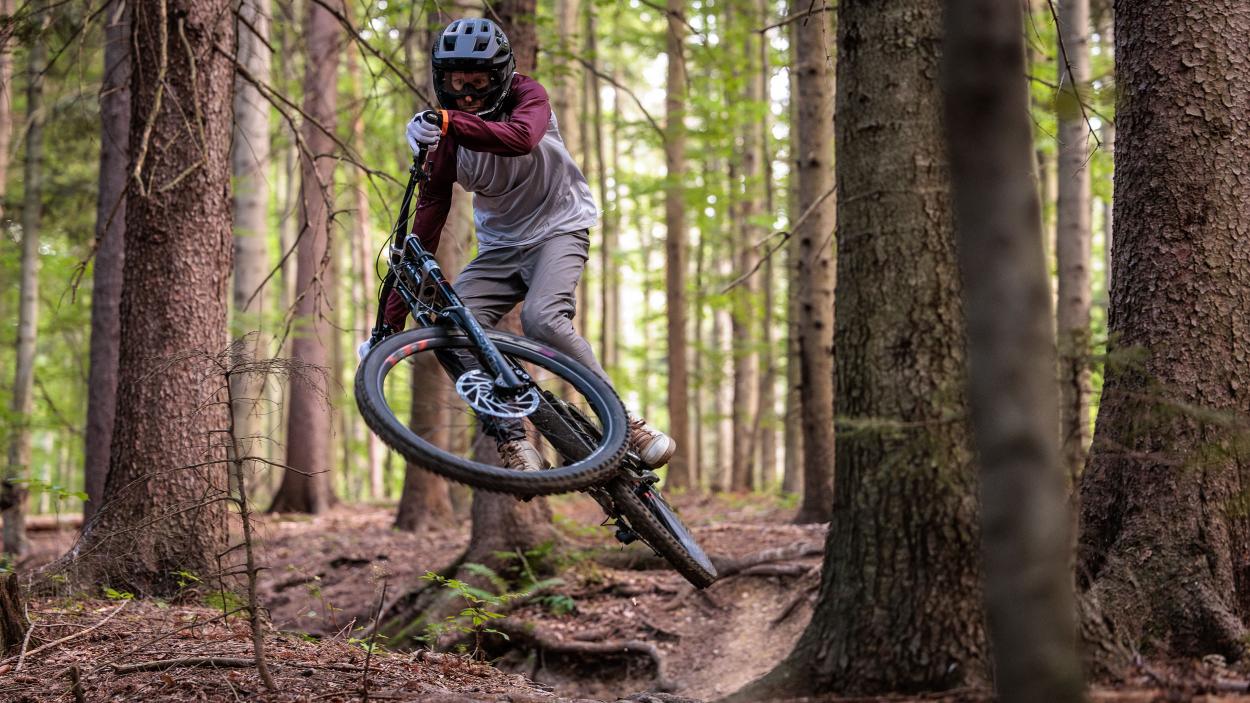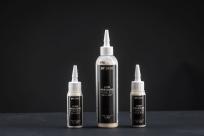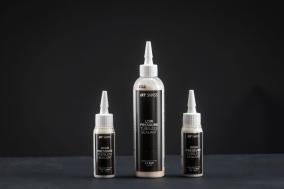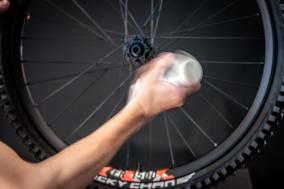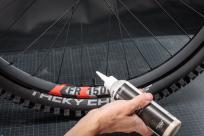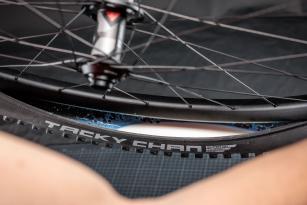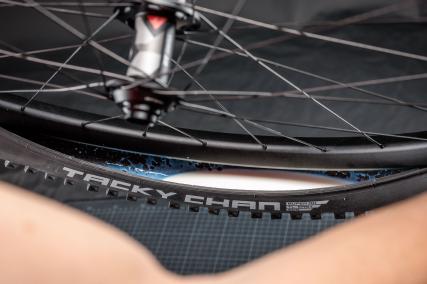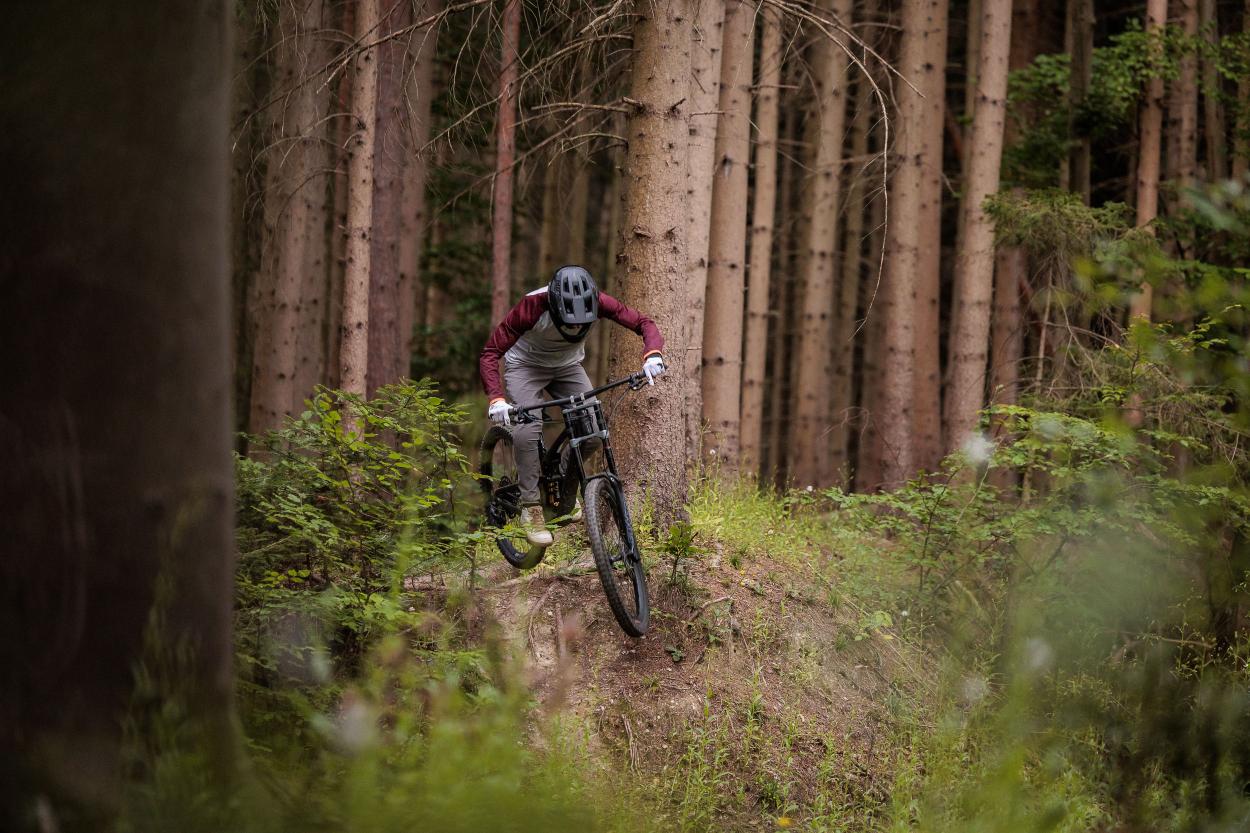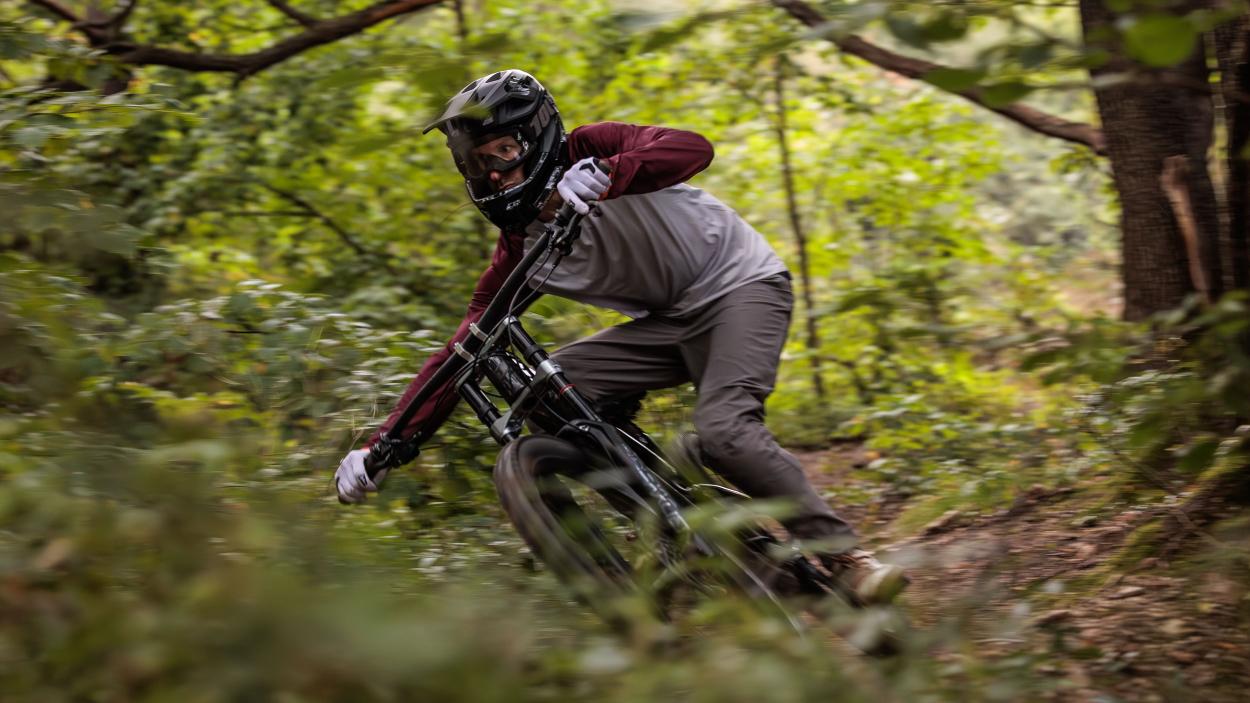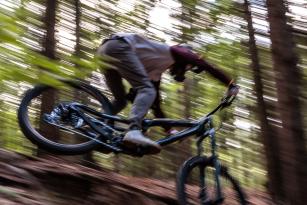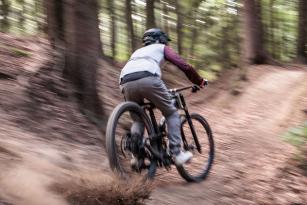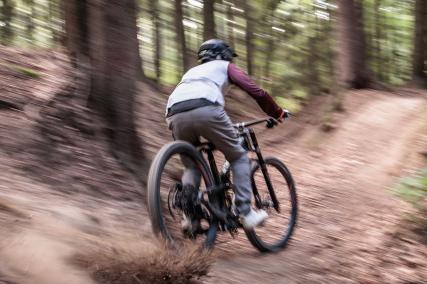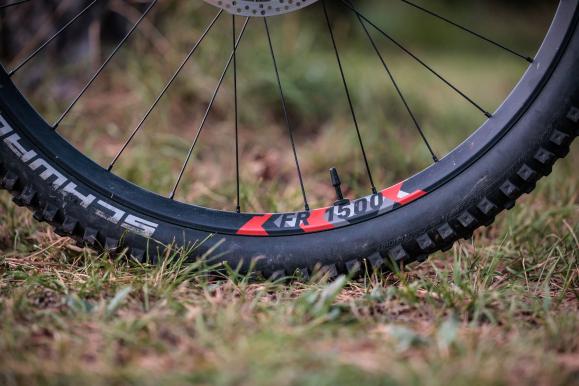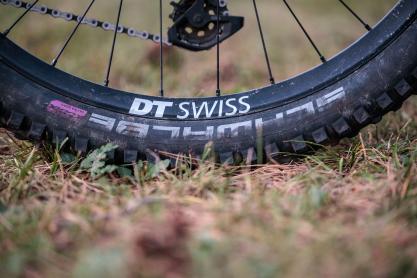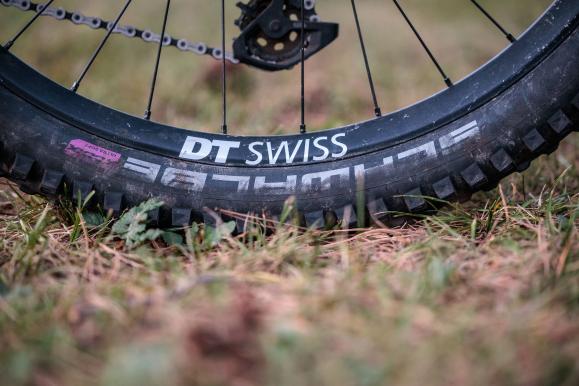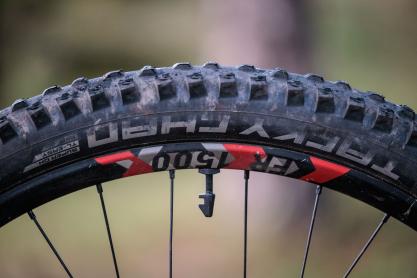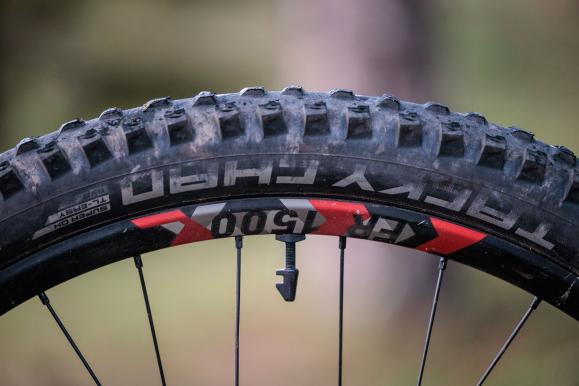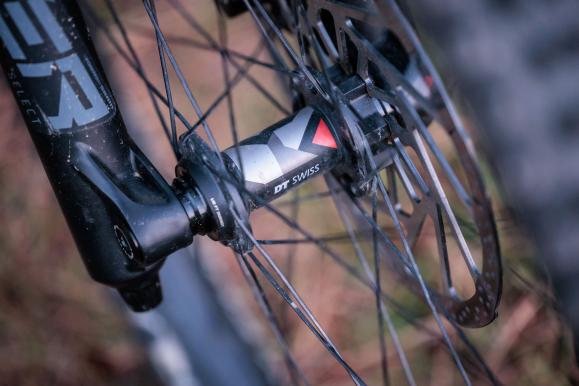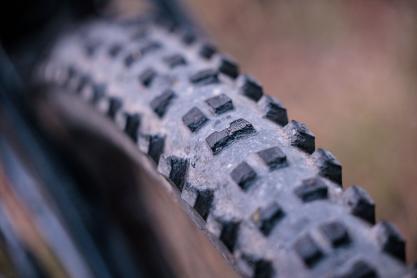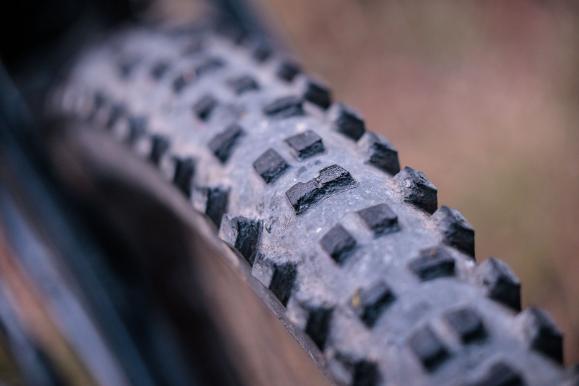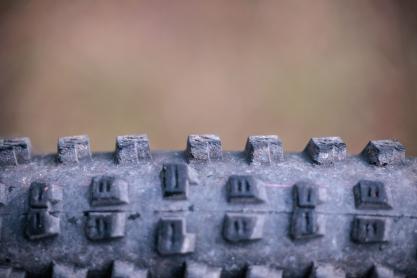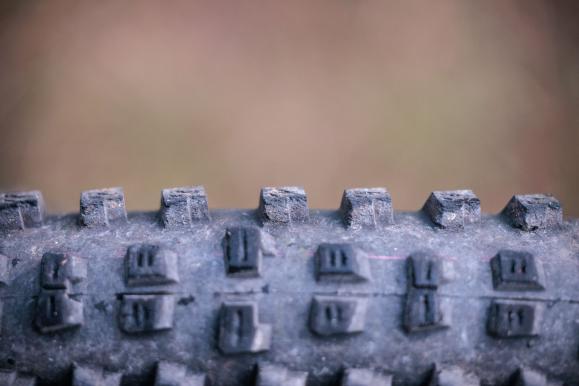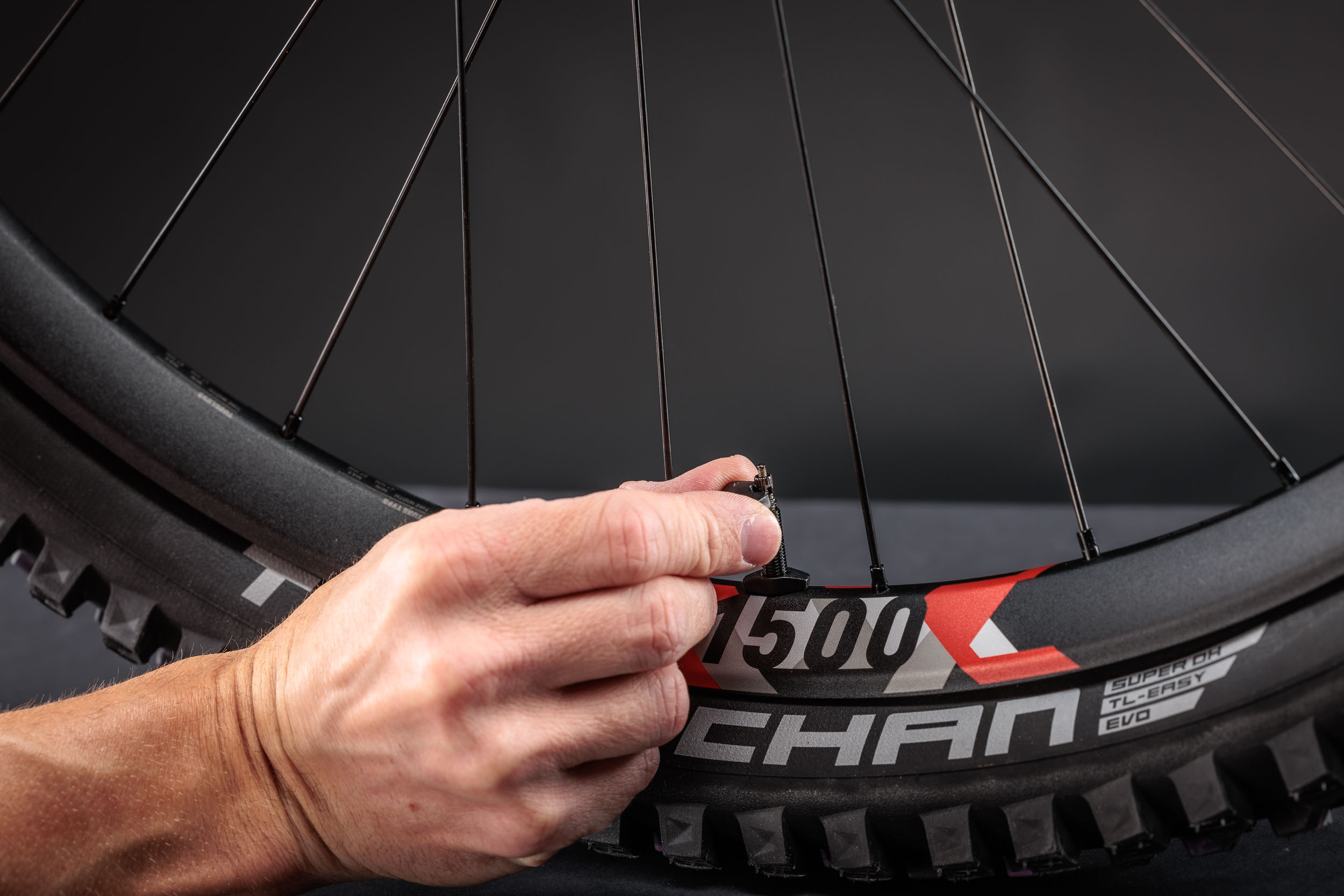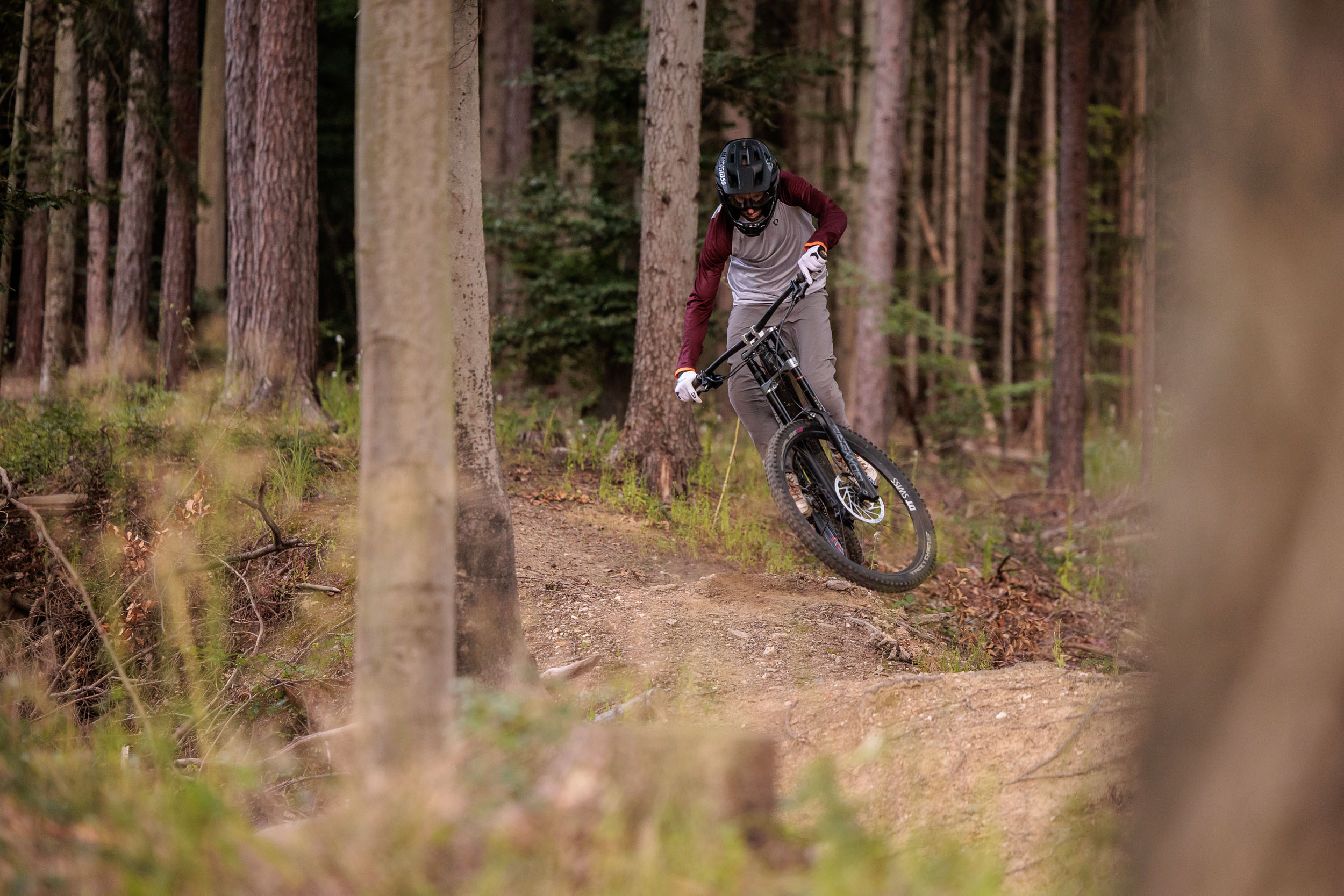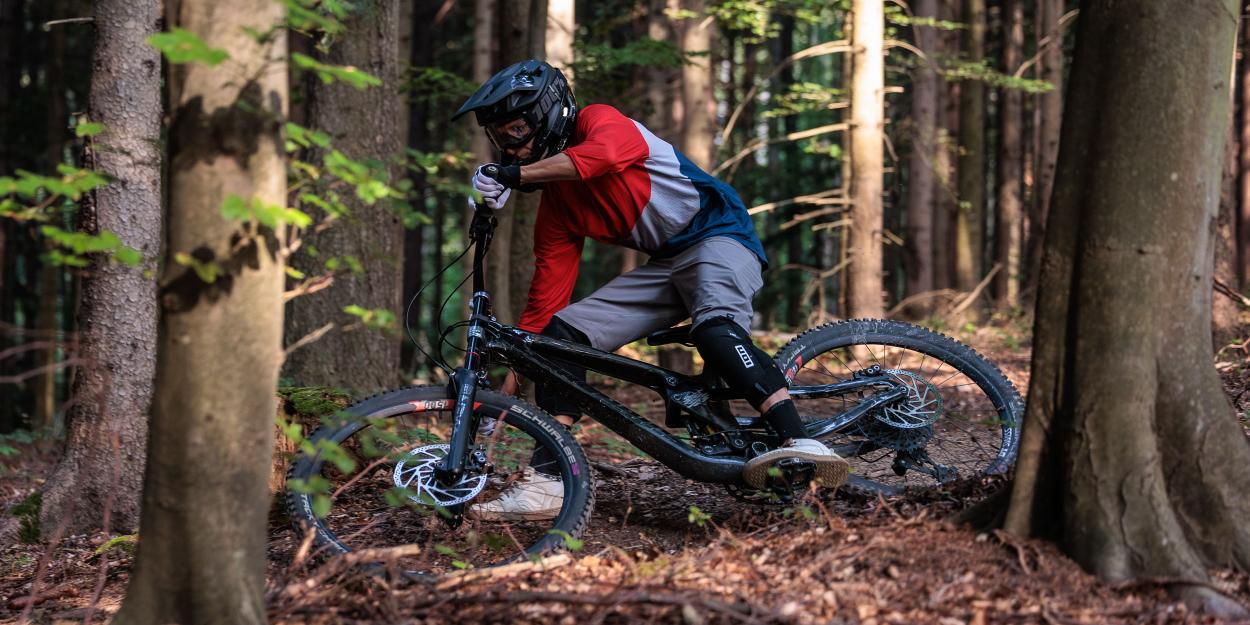
In Review: DT Swiss FR 1500 Classic 2023
06.09.23 08:05 482023-09-06T08:05:00+02:00Text: Ralf Hauser (translated by AI)Photos: Erwin HaidenPresented a few months ago, the new FR 1500 has now been put to the test over several hundred kilometers with numerous vertical meters to prove whether it can withstand gravity conditions.06.09.23 08:05 522023-09-06T08:05:00+02:00In Review: DT Swiss FR 1500 Classic 2023
06.09.23 08:05 522023-09-06T08:05:00+02:00 Ralf Hauser (translated by AI) Erwin HaidenPresented a few months ago, the new FR 1500 has now been put to the test over several hundred kilometers with numerous vertical meters to prove whether it can withstand gravity conditions.06.09.23 08:05 522023-09-06T08:05:00+02:00Freeride/Downhill are the segments for which DT Swiss has designated the FR 1500 Classic. Accordingly, it can be taken on with its ASTM 5 classification. By the way, it is the only wheelset with such downhill suitability in DT Swiss's range.
Vali Höll has already added victories in the World Cup and at the World Championships to the trophy collection of the new FR 1500; Troy Brosnan, for example, consistently finishes in the top ten of the elite with it. Its suitability for the highest level of racing no longer needs to be proven.
In detail
After the FR 1500 Classic replaces the FR 1950 Classic, and its performance values were used as a guideline, it is only fair to make comparisons between the two wheelsets.
The aluminum rim with a new rim profile along with a 30 mm internal width - identical to the FR 541 rim introduced a few months ago - sets the tone for the FR 1500 wheel. Impact resistance is said to have been increased through smart use of more material where it is needed, as well as reduction where possible. An improved shape of the sidewall - similar to the cross-section of an anvil, wider towards the tire - is supposed to reduce the susceptibility to flats by 17%. This value was determined in cooperation with a leading tire manufacturer.
The rear wheel is equipped with 32 spokes, the front wheel has been reduced from 32 to 28 spokes. Mainly due to the resulting weight reduction, the responsiveness to changes in direction is said to have increased.
The DT Swiss Comp with 2.0-1.8-2.0 mm thickness also help to save weight with their butting. The designation Classic in the name, by the way, stands for the use of classic J-Bend spokes, which are crossed three times.
The nipples are coated with Pro Lock two-component adhesive, which is supposed to prevent the loosening of spoke tension. In the case of the FR 1500 wheelset, they were hand-laced by experts.
The FR 1500 weighs 7% less compared to the FR 1950 and starts at 1,928 g for the set. Our 29" front wheel weighed 1,006 g with 15 mm hub fittings. Our 27.5" rear wheel with 148 mm Boost standard and Sram XD freehub weighed 1,017 g. Total thus 2,023 g.
The hub is equipped with the lightweight DT Swiss 240, along with the Ratchet EXP 36T freehub system and 6-bolt rotor attachment. Compared to its long-standing predecessor, the Ratchet EXP requires fewer individual parts, as the ratchet ring and the threaded ring are combined. This reduces the weight of the system. Only one guided spring is used, ensuring precise interlocking. 36 engagement points result in a release angle of 10 degrees.
DT Swiss hubs are designed to have optimal axial and radial bearing clearance when the hubs are correctly installed in the wheel and bicycle.
The freehub body can be easily switched between Sram XD and Shimano Micro Spline by simply pulling it off the hub.
For the front wheel hub, the end pieces can easily be switched between 15 mm Boost and 20 mm Boost axle standards. In the case of the rear wheel hub with a 157 mm installation width, it can similarly be used with a 150 mm width by changing adapters.
The wheelset is delivered tubeless-ready with mounted rim tapes and corresponding tubeless valves.
The DT Swiss valve itself is made of aluminum and is supposed to save 40% weight compared to traditional brass valves. The valve tool integrated into the valve cap is designed to save time and effort in searching for the right tool to remove the valve insert.
The maximum system weight is 140 kg. The FR 1500 Classic is not approved for use with e-bikes; there are numerous other options available in the DT Swiss range for this.
The FR 1500 Classic is available in a variety of standards. For wheel size, you can choose between 29", 27.5" or Mixed. As for the axle system, the variants 15 x 110 Boost and 20 x 110 Boost for the front wheel as well as 12 x 148 Boost, 12 x 150, or 12 x 157 mm for the rear wheel are on the menu. The Boost variant can be ordered with Sram XD or Shimano Micro Spline, the wider hub version with Sram XD or Shimano HG freehub body.
The DT Swiss FR 1500 Classic wheelset is available from € 899,-.
In the bike park and nasty terrain
To survive in the market as a downhill-certified wheelset, the ingredients must be well chosen. It's not uncommon for wheelsets in this category to carry a bit of excess weight to avoid literally falling apart under high loads.
What personally appeals to me about the new FR 1500 Classic starts with its sleek appearance. With it, it knows how to integrate itself into the look of a gravity bike in a straightforward and unobtrusive manner.
Ok, maybe not entirely inconspicuous after all. Purists might take issue with the red color accent of the rims. Not every frame color will perfectly match this splash of color.
The setup with Schwalbe tires with downhill casing was as easy as possible. The use of plastic tire levers facilitated mounting onto the rim, when pulling off the tires, one probably won't get far without such helpers.
The tire itself sits tightly on the center of the rim when not inflated, making it possible to inflate with a tubeless setup even with a regular floor pump.
By the way, we set up our tubeless setup with the new DT Swiss Low Pressure Tubeless Sealant, which is suitable for up to 4.5 bar air pressure (or 65 psi).
However, filling through the valve after unscrewing the valve head can be confidently forgotten due to the small beads in the mixture, which are supposed to help seal a hole, as the sealant, despite being well shaken and immediately filled in, clogs the valve in no time. You can imagine the mess that results. Accordingly, one should set aside the instructions and fill the sealant before the tire is completely mounted on the rim. For our 2.4" wide tires, we filled 120 ml into each tire - the maximum recommended amount for this size.
An inner width of 30 mm provides common downhill tire dimensions, which are mainly situated between 2.4 to 2.5" width, enough surface to realize their intended cross-sectional shape. As a result, the sidewalls also receive good support to prevent squirming in sharp berms and to dig their side knobs into corners.
From a quality perspective, the DT Swiss wheels live up to the reputation of Swiss precision workmanship. Clean corners and edges on the machined parts and a unique surface treatment of the rim speak for themselves. The rim joint is practically invisible.
In terms of riding behavior, the FR 1500 has no need to hide either. The flat rim profile and the tuning of the spoke thickness ensure a pleasant inherent damping of the wheelset, without delivering harsh feedback to the hands. Anyone who has ever mounted a rock-hard wheel on their bike knows that even the best suspension cannot eliminate the uncompromising character of a too stiff front wheel.
The tracking leaves nothing to be desired. Even when making side contact with obstacles, the front wheel does not deflect unpleasantly and invites you to carve your way down through scree fields. With a weight of around 1,000 grams each, the steering behavior is quite agile for a downhill wheelset. The rotational mass generally does not cause any feelings of inertia when pushing the bike hard into corners. Accordingly, load changes in tight, quick succession turns can be executed effortlessly.
Even for enduro use in tough terrain, the FR 1500 Classic would be quite suitable due to these characteristics. The freeride use it is specifically designed for, where pedaling up under one's own power is sometimes required, it masters anyway.
Contact between larger, loose stones and the rim is accompanied by a loud ping noise; thus, the resonating body of the wheels proves to be very musical in this respect. Moreover, this phenomenon seems to have no significance - at least none that became visible in the review with the naked eye.
Over the review period, the FR 1500 covered approximately 850 kilometers, some of which were in bike parks, the majority on trails around Finale Ligure. It was installed on a downhill bike, as well as on an E-bike with 180 mm of travel, and a mix of simple tubeless setup and Rimpact Pro V1 inserts.
As a reminder: The wheelset is not approved by DT Swiss for E-bikes; this fact is accordingly assessed further below. Nonetheless, we did it to accumulate a useful number of test kilometers and to subject them to tougher conditions.
Regarding riding style, there was never an intention to deliberately destroy the rim. Still, it was enough for some top 10 Strava placements (whatever value one may attribute to them) as benchmarks on technically demanding trails.
The inventory after the test duration amounts to a pretty unimpressed front wheel, without any bumps, dents, or wobbles. Only the surface of the rim shows some small nicks from loose stones - nothing unusual.
The rear wheel did not fare quite as well. Basically, its roundness was not bad, but there were two slight wobbles and one minimal bump at one point. After the trails it was ridden on - some of them with long brutal rocky sections - nothing extraordinary. However, the spoke tension, especially that of the disc side, decreased; at the points of the wobbles to a worryingly low value. The riding behavior did not change drastically, which speaks for the generally stable construction of the wheelset.
At this point, the use on the e-bike must be taken into account. The FR 1500 wheelset is not designed for use with it, accordingly, it cannot necessarily be blamed for not completely absorbing the disproportionate pulling forces of the motor without maintenance. After, for example, in the review of the DT Swiss HX 1700 Hybrid LS wheelset designed for Light E-Bikes with stronger spokes and parts, which are designed for the differently acting forces, there was absolute maintenance freedom, one must probably agree with the concept of DT Swiss.
Apart from that, it is actually customary that you have to regularly check the spoke tension under DH stress. Professional racers usually wear out several rims and sets of spokes per race weekend. If you want to believe the statements of some racing teams, the new FR 1500 is supposed to survive entire World Cup weekends, which would indeed be proof of its durability.
After restoring the spoke tension and exclusive use on a DH/Freeride bike, I will see over the next few months how the wheel continues to behave, and report back here.
Does the slightly increased surface area of the rim flanks really make a difference in terms of puncture resistance? From a physical point of view, one can assume so. During the test period, there were no punctures with downhill carcass on the tires despite direct contact between obstacles and rim. Of course, this is no guarantee for future, bad landings on a nasty, sharp-edged stone.
Otherwise, there is only to report that probably contacts with coarser rocks have abraded the side flank of the rim more severely at two points. However, no functional impairment was observed.
Since there were no injuries to the casing during the test period, not much can be said about the properties of the DT Swiss sealing compound.
There were no wet spots on the sidewalls to report, which speaks for the compatibility of the composition. The loss of air over several days was minimal. After two months of use, mainly in hot temperatures in southern regions, not much was left of the original thin liquid state. Rather, a viscous, slimy film covered the inside of the tire. How much of the sealing capability would still be present in this form is hard to say.
DT Swiss 240 hubs do not need much introduction. They have proven their durability over the years, even under the toughest conditions. The initial tolerance problems and resulting technical issues with the switch to Ratchet EXP are now a thing of the past, allowing the latest generation to enjoy a reliable reputation today.
With a 10-degree engagement angle, the hub quickly converts pedaling power into propulsion. Apart from personal preferences, larger engagement angles can reduce pedal kickback from suspensions somewhat, which is why I would not clamor for even smaller angles.
In freewheeling, the ratchet discs in the DT Swiss 240 hub produce a relatively loud buzzing sound. There are louder systems on the market, but also significantly quieter ones. I am still waiting for the day when completely silent options for freewheel bodies are introduced to the market. For those who share my longing: A thin layer of DT Swiss Special Grease between the ratchet discs can at least temporarily reduce the noise a bit. By the way, one should not switch to any grease other than DT Swiss Special Grease. Using other products voids the warranty.
As with my last review of a wheelset from DT Swiss, I find it regrettable that there has been no further development regarding the valve construction. This is incompatible with the most common inserts and carries the realistic chance of being clogged from the inside by sealant. Better solutions have been available on the market for some time.
The integrated valve tool in the valve cap is a nice idea. However, since the material is quite flexible plastic and one side of the tool is open, the force that can be applied before the tool slips off the valve head is minimal. Therefore, unscrewing the valve head when it is stuck is impossible. However, as an attempt has shown, it is possible to screw in the valve on the trail, in case it has completely loosened, so that the tubeless setup temporarily holds air again.
It is brilliant that the axle standard at the front wheel hub can simply be switched between 15 x 110 mm Boost and 20 x 110 mm Boost by changing adapters. DT Swiss has always been good at adapting its high-end hubs to various axle standards.
The same applies to the lightning-fast possibility of changing the freehub body.
Conclusion
| DT Swiss FR 1500 Classic | |
|---|---|
| Model Year: | 2023 |
| Review Duration: | 850 km |
| Price: | from € 899,- RRP |
| + | Responsive Steering Behavior |
| + | Relatively low weight for the category |
| + | Pleasant Compliance |
| + | Robust |
| + | Interchangeable axle standards for some versions |
| o | quite loud freewheel |
| o | Valve not compatible with inserts |
| o | Verdict regarding spoke tension not yet conclusive |
| BB-Verdict: | High-End smooth runner for ambitious gravity pilots. |
The DT Swiss FR 1500 Classic is without question a worthy successor to the FR 1950, with less weight and seemingly higher puncture resistance on top of that. Quality-wise at the highest standard, the riding behavior is characterized by a good mix of self-damping and steering precision.
Thanks to its sleek appearance and relatively low weight for an ASTM 5 classification, even use on Enduro bikes seems possible if you like to hammer down the most technically demanding trails.
The raceworthiness of the FR 1500 has already been confirmed with the use of some of the world's best downhill World Cup teams. Accordingly, the wheelset should also be able to survive a hard season in the bike park with some maintenance.
Besides a few naturally occurring stone chips, which left small nicks on the surface of the rims and spokes, only the rear wheel was affected by a loss of spoke tension and two small lateral and one minimal vertical deviation after a significant mileage. Complete maintenance freedom over a long period in the gravity area is probably a bit much to ask for, and an actually not approved use on an E-Bike could have accelerated the process.
Because of this, we will also gather further experiences on a DH/Freeride bike over the coming months and subsequently incorporate them here.




